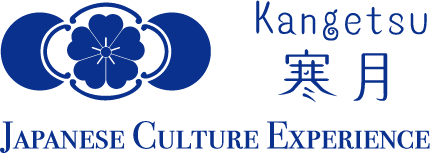About Japanese CalligraphyJapanese Calligraphy Experience in Kyoto
"A Moment to Experience Japanese Traditional Culture"
Welcome to the Kangetsu Japanese Calligraphy Course!
Japanese calligraphy is a traditional cultural art that pursues artistic expression through the act of writing characters.
For centuries, it has emphasized spirituality and aesthetics, developing as an art that reflects Japan's unique sense of beauty.

Introduction to Japanese Calligraphy
Japanese Calligraphy is a traditional Japanese cultural art that pursues the artistic act of writing characters.
It was introduced from ancient China and evolved into distinct styles over time in Japan.
Initially, writing was a tool for recording and communication, but it gradually transformed into a form of artistic expression, leading to the development of modern calligraphy.
Japanese Calligraphy was introduced to Japan during the Asuka period (6th century) alongside Buddhism.
As the understanding of Chinese characters deepened, techniques and aesthetic appreciation of writing became ingrained in Japanese culture.
1. Nara Period (8th century)
The history of calligraphy in Japan began in earnest during the Nara period.
During this era, Chinese characters were widely used in Buddhist scriptures and rituals. Texts like the "Nihon Shoki" and "Kojiki" employed calligraphy.
The influence of the Sui and Tang dynasties' calligraphy was significant, leading to the introduction of various styles like seal script and clerical script.

2. Heian Period (9th–12th century)
During the Heian period, Japan developed its own kana scripts (hiragana and katakana), enriching the art of calligraphy.
Japanese Calligraphy became essential in women's literature, exemplified by works of Murasaki Shikibu and Sei Shonagon.
Japanese Calligraphy was not only about the beauty of characters but also reflected the writer's spirit and individuality.

Commonalities Between Japanese Calligraphy and Zen
Achieving a State of Mindlessness
Japanese Calligraphy and Zen are deeply interconnected as symbolic traditions of Japanese culture. Zen philosophy greatly influences calligraphy techniques and expression, with both focusing on the exploration of spirituality.
- State of Mindlessness
- In Zen practice, "mindlessness" refers to clearing the mind of distractions. In calligraphy, this state is ideal for achieving bold, natural strokes.
- Self-Exploration
- Zen involves exploring one's true nature. Similarly, calligraphy serves as a form of self-expression, allowing practitioners to reflect and convey their inner selves through the brush.
- Simplicity and Naturalness
- Zen aesthetics value simplicity and naturalness. In calligraphy, works that are simple yet profound are highly valued, embodying unembellished beauty.
- Fude-Zen-Do (Brush Zen Path)
- "Fude-Zen-Do" is a unique practice combining Zen and calligraphy. Using the brush as a meditative tool, practitioners seek inner growth and spiritual refinement.
- Historical Background
- The relationship between Zen and calligraphy dates back centuries. Particularly, the "bokuseki" (ink traces) of Rinzai monks are treasured as symbols of Zen spirit and are often used as scrolls in tea ceremonies.







